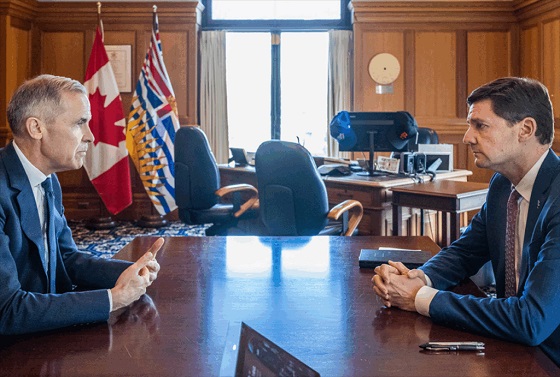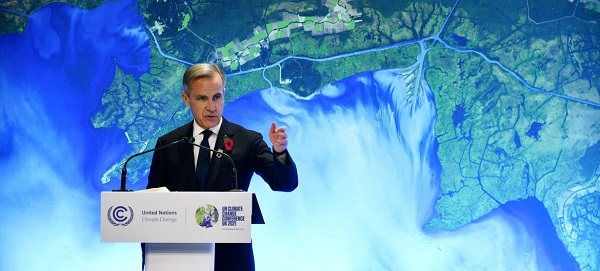International
JD Vance was one of the last people to meet Pope Francis
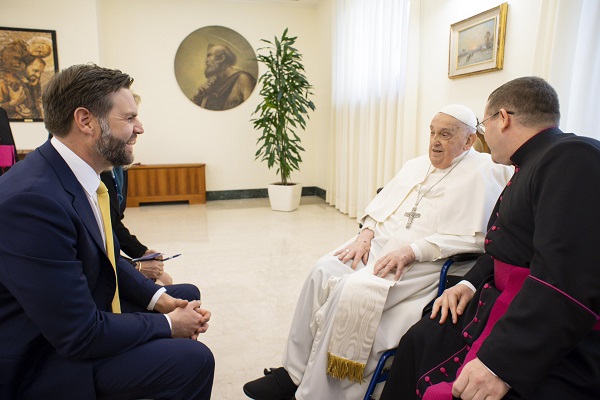
From LifeSiteNews
By Matt Lamb
Vice President JD Vance was one of the last people to meet Pope Francis, as he saw him yesterday on Easter. Francis met with Vance, before he traveled to St. Peter’s Square to give a blessing to thousands gathered for Easter.
The pope died this morning at 7:35 this morning in Rome.
Vance, a Catholic convert, said his “heart goes out to the millions of Christians all over the world who loved him.”
“I was happy to see him yesterday, though he was obviously very ill,” Vance wrote on X. “But I’ll always remember him for the below homily he gave in the very early days of COVID. It was really quite beautiful.”
“May God rest his soul,” Vance wrote.
Vance linked to a March 27, 2020 homily titled “Extraordinary Moment of Prayer.”
Pope Francis said:
Embracing His cross means finding the courage to embrace all the hardships of the present time, abandoning for a moment our eagerness for power and possessions in order to make room for the creativity that only the Spirit is capable of inspiring. It means finding the courage to create spaces where everyone can recognize that they are called, and to allow new forms of hospitality, fraternity and solidarity. By his cross we have been saved in order to embrace hope and let it strengthen and sustain all measures and all possible avenues for helping us protect ourselves and others. Embracing the Lord in order to embrace hope: that is the strength of faith, which frees us from fear and gives us hope.
Vance was in Italy this week, as he also met with Prime Minister Giorgia Meloni. He also attended a Good Friday liturgy at the Vatican, as reported by the Associated Press. However, it remained unclear if the vice president would meet with the Pope, although he had a scheduled meeting with Cardinal Pietro Parolin.
In February, Pope Francis appeared to directly address Vance’s citation of “ordo amoris” where the vice president argued that the country must first take care of its own citizens before refugees and illegal immigrants.
As LifeSiteNews previously reported:
Earlier this year Pope Francis issued a blistering letter, appearing as a direct rebuff to both President Donald Trump’s policies to tackle illegal immigration and JD Vance’s comments about the “ordo amoris.”
Francis took direct aim at Vance about the “ordo amoris” – the Catholic teaching on a hierarchy or order of charity which starts with God, the family, and spreads eventually to the wider world – a principle defended and outlined by the Greek philosophers and Catholic theologians such as Sts. Augustine and Thomas Aquinas.
Repeatedly referring to the “infinite dignity” of man, Francis appeared to suggest that, based on this dignity, all people should be loved to the same degree and in the same way, thus defending his principle that the same dignity should be the principle behind having widely permissive immigration policies.
As extensively reported by LifeSiteNews, the pope’s health has been in decline for several months now since he was first admitted to the hospital in February for bronchitis, which turned out to actually be double pneumonia. A full obituary by LifeSiteNews’ Senior Vatican Correspondent Michael Haynes can be read here.
Health
NEW STUDY: Infant Vaccine “Intensity” Strongly Predicts Autism Rates Worldwide

Across countries on three continents, a 1% increase in vaccine types before age one corresponded to a 0.47% increase in autism prevalence.
A new cross-national study from Italy’s National Research Council, spanning multiple developed countries across three continents, has identified a remarkably strong association between early-life vaccine intensity and autism prevalence. The number of vaccine types and doses administered before 12 months showed exceptionally high correlations with national autism rates.
A 1% increase in vaccine types before age one corresponded to a 0.47% increase in autism prevalence.
The correlation is enormous — r = 0.87 for vaccine types and r = 0.79 for vaccine doses. In regression models, vaccine intensity alone explained 81% of the variance in autism prevalence across nations.
This is not an isolated signal. It directly corroborates earlier U.S. state-level data from DeLong (2011) — and aligns with the 107 positive-association studies catalogued in the McCullough Foundation’s Landmark Autism Report.
Key Findings
Coccia used cross-national 2021 autism incidence data paired with WHO-reported infant vaccine schedules. Countries were grouped into relatively comparable healthcare and surveillance systems (North America, Europe, and advanced Asian nations) to reduce detection and reporting bias. The primary exposures were:
- number of vaccine types given ≤12 months, and
- total number of doses delivered ≤12 months.
Autism prevalence per 100,000 children served as the outcome, and general vaccination coverage rates were statistically controlled so only vaccine intensity and timing were isolated.
The results were striking but unfortunately expected:
- Countries such as the U.S., Canada, Australia, Japan, South Korea, and Singapore give ~15 vaccine types and 20 doses before age one — and have the highest autism prevalence (~1,273 per 100k).
- Countries like Norway, Finland, Denmark, Italy, and the UK give ~8 vaccine types and 9 doses — and have significantly lower autism rates (~834 per 100k).
- A 1% increase in vaccine types before age one corresponded to a 0.47% increase in autism prevalence.
- The regression model (log–log) explained 81% of the variance.
Coccia then used quadrant mapping to classify nations:
- Critical Risk Zone: high vaccine intensity + high autism (U.S., Canada, Australia, Japan, South Korea, Singapore)
- Protection Zone: low vaccine intensity + low autism (Nordic countries)
- Transitional Zone: countries on track to move upward as vaccine intensity rises (Italy, UK)
The conclusion is clear: Early-timed and compound vaccination strongly tracks with rising autism rates.
How DeLong (2011) Fits In
DeLong’s analysis of CDC data found that each 1% rise in U.S. childhood vaccination coverage was associated with ~680 additional cases of autism and speech/language impairment nationwide.
Where DeLong examined state-level associations between how many children were fully vaccinated and subsequent autism/SLI prevalence, Coccia provides the first true cross-national dose–response analysis — showing that the number of vaccine types and doses given before age one powerfully predicts national autism prevalence.
Both studies point in the same direction:
more vaccination in early life → higher autism prevalence.
How This Strengthens the McCullough Foundation’s Landmark Autism Report
Our Autism Report reviewed 136 vaccine-related studies:
- 107 studies inferred positive associations between vaccination or vaccine components and ASD/NDDs.
- All 12 vaccinated vs unvaccinated studies found better neurodevelopmental outcomes in completely unvaccinated children, including far lower rates of autism.
- Found strong, consistent increases in cumulative vaccine exposure during early childhood and the reported prevalence of autism across successive birth cohorts.
We concluded:
Combination and early-timed routine childhood vaccination constitutes the most significant modifiable risk factor for ASD, supported by convergent mechanistic, clinical, and epidemiologic findings, and characterized by intensified use, the clustering of multiple doses during critical neurodevelopmental windows, and the lack of research on the cumulative safety of the full pediatric schedule.
Coccia independently arrived at a highly similar conclusion:
This study offers a critical contribution to the ongoing discourse on vaccine safety and neurodevelopment by identifying a statistically significant association between early-life vaccine intensity and national autism rates.
All evidence points to the same conclusion:
Early, clustered vaccination is the strongest modifiable driver of rising autism rates.
Epidemiologist and Foundation Administrator, McCullough Foundation
Support our mission: mcculloughfnd.org
Please consider following both the McCullough Foundation and my personal account on X (formerly Twitter) for further content.
FOCAL POINTS (Courageous Discourse) is a reader-supported publication.
To receive new posts and support my work, consider becoming a free or paid subscriber.
Daily Caller
‘Holy Sh*t!’: Podcaster Aghast As Charlie Kirk’s Security Leader Reads Texts He Allegedly Sent University Police


From the Daily Caller News Foundation
The person in charge of the security detail for Turning Point USA (TPUSA) founder Charlie Kirk says he warned Utah Valley University (UVU) police about access to a rooftop days before Kirk’s assassination, shocking podcaster Shawn Ryan on Monday.
Kirk was assassinated during a TPUSA event at UVU on Sept. 10, during which he was debating attendees. Brian Harpole of Integrity Security Solutions read Ryan texts during the episode of “The Shawn Ryan Show” of him allegedly flagging for UVU’s police chief the rooftop used by Kirk’s alleged assassin on Sept. 8, two days before the assassination.
WATCH:
“We have some correspondence with the chief of the school uh on that day, on Monday, before Charlie was killed and why this hadn’t come out and why he won’t stand up like a man and admit this, I don’t know, but he’s watching a bunch of men lose their careers and he’s okay with it,” Harpole told Ryan. “On Monday before, this correspondence went to Chief Long. ‘Hello, Chief Long. We received this message today from the student group. ‘There is a student roof access pretty close to where CK will be set up at the Utah Valley. (The Sorenson Center has a couple of staircases that go up to walkways on the roofs.)’”
“He comes back and the so, for edification, the Sorenson Center was the building in front of the Losee Center and so, he comes back he says you want uh access to the roof and came back and said I was told students have access above us,” Harpole continued. “If this is true it would be nice to either have it controlled access or allow one of my guys to be there as well if possible. He comes back and his last correspondence was, ‘I got you covered.’ What else am I to do when a command level person from an accredited police department says, ‘I’ve got this area.’?”

Text exchange between Brian Harpole and UVU police official. (Screenshot/YouTube/Shawn Ryan Show)
“That was the chief of police for the UVU Police Department. We’ve called him. He’s never called us back,” Harpole added as Shawn Ryan responded by saying “Holy shit.”
UVU did not immediately respond to a request for comment from the Daily Caller News Foundation.
Video released of the immediate aftermath of the assassination of Kirk shows the alleged gunman making his escape by dropping off the roof and fleeing. Authorities arrested Tyler Robinson, 22, early on Sept. 12, accusing him of fatally shooting Kirk.
“Probably literally all they had to do is post anybody at that stairwell,” Harpole said.
-

 Alberta1 day ago
Alberta1 day agoAlberta Offers Enormous Advantages for AI Data Centres
-
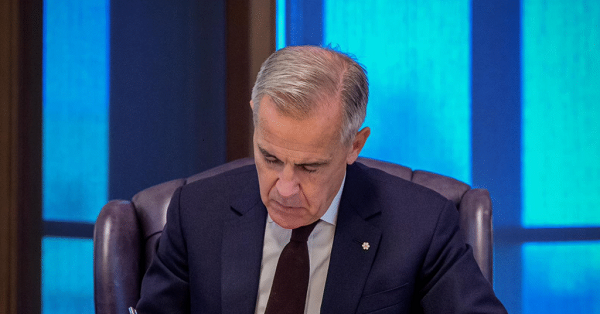
 Business2 days ago
Business2 days agoLiberal’s green spending putting Canada on a road to ruin
-

 Daily Caller13 hours ago
Daily Caller13 hours ago‘Holy Sh*t!’: Podcaster Aghast As Charlie Kirk’s Security Leader Reads Texts He Allegedly Sent University Police
-

 Alberta1 day ago
Alberta1 day agoNational Crisis Approaching Due To The Carney Government’s Centrally Planned Green Economy
-

 Alberta1 day ago
Alberta1 day agoCalgary mayor should retain ‘blanket rezoning’ for sake of Calgarian families
-
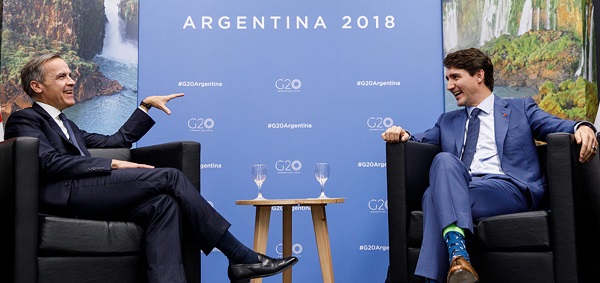
 Carbon Tax6 hours ago
Carbon Tax6 hours agoCarney fails to undo Trudeau’s devastating energy policies
-

 Alberta13 hours ago
Alberta13 hours agoSylvan Lake football coach fired for opposing transgender ideology elected to town council
-

 Great Reset13 hours ago
Great Reset13 hours agoCanadian government forcing doctors to promote euthanasia to patients: report







